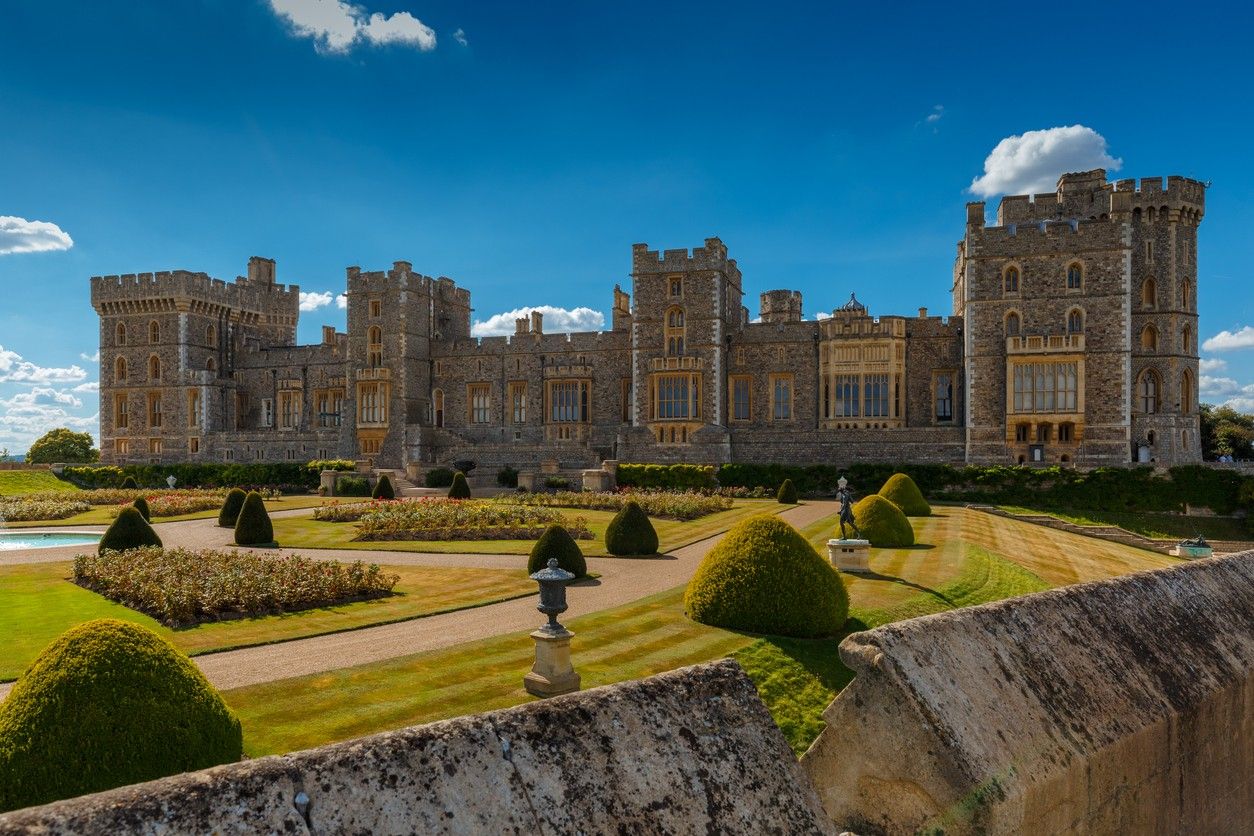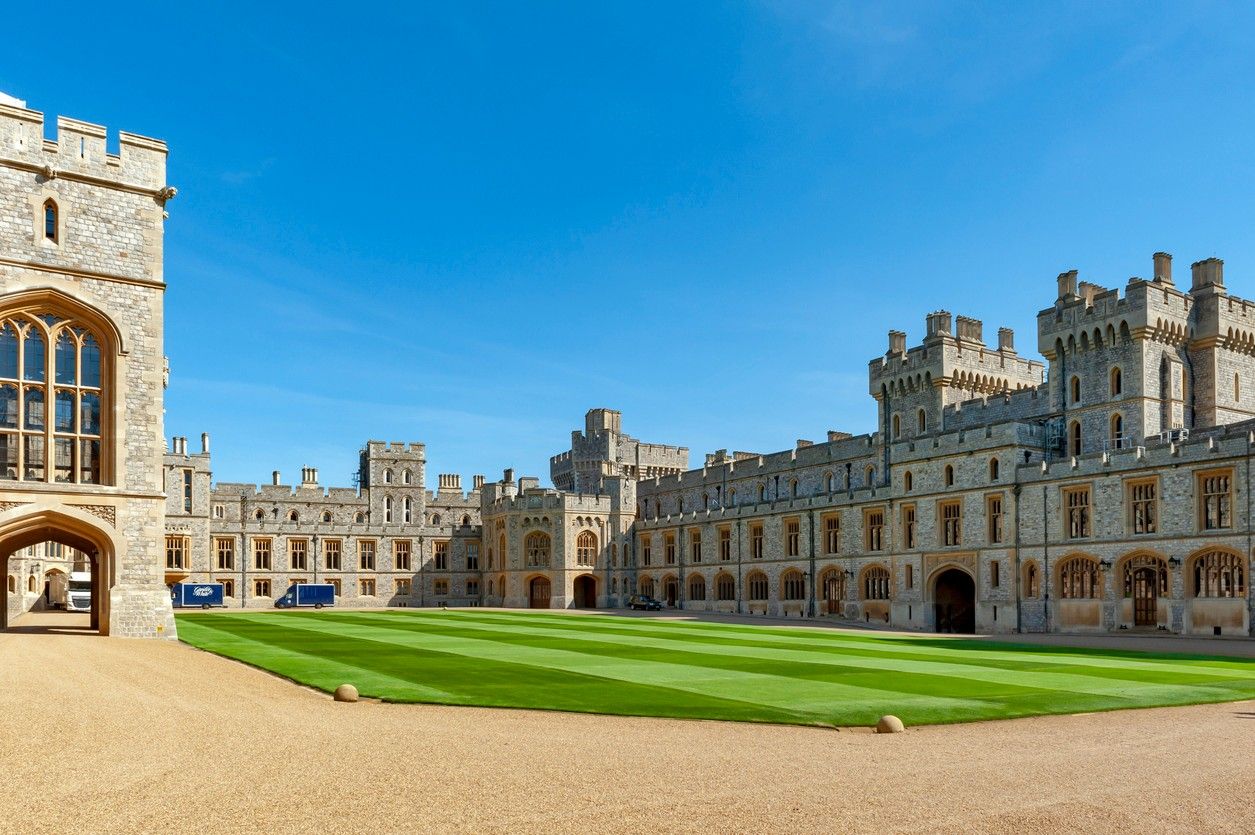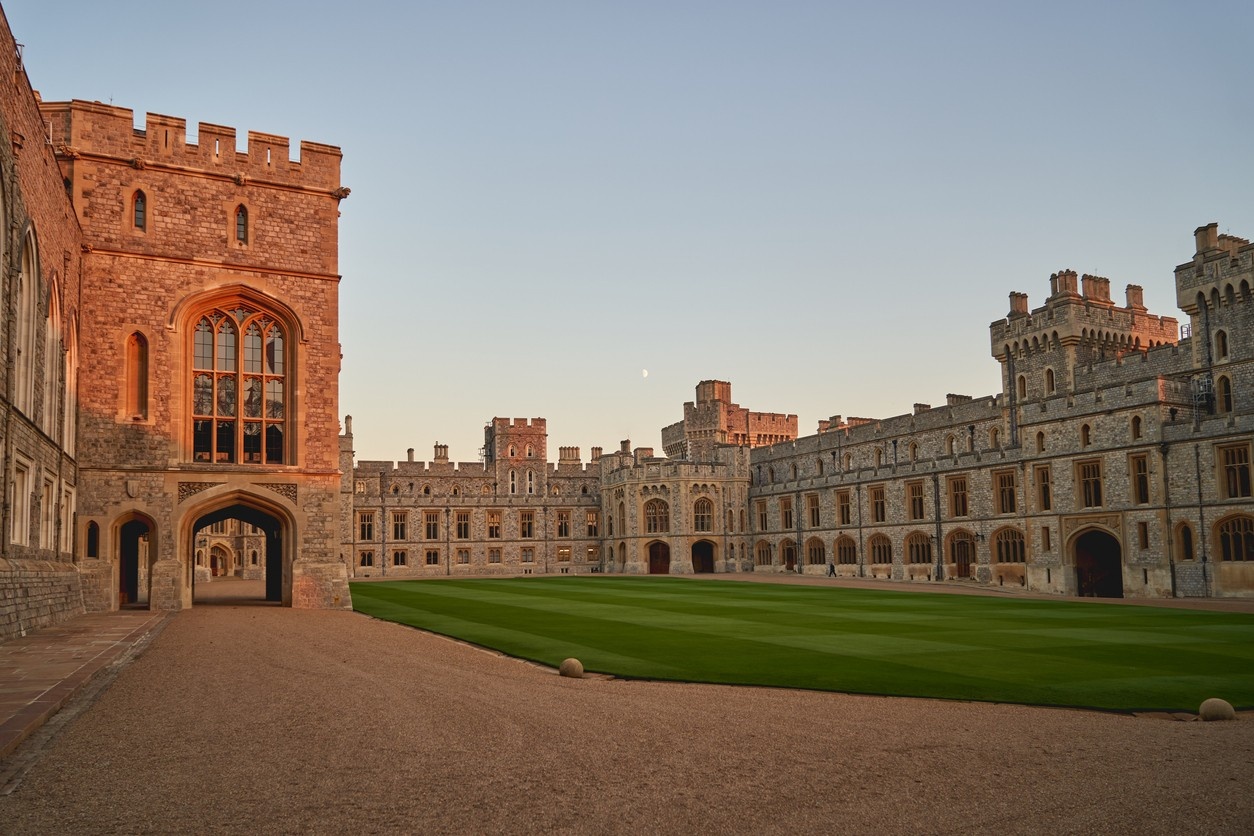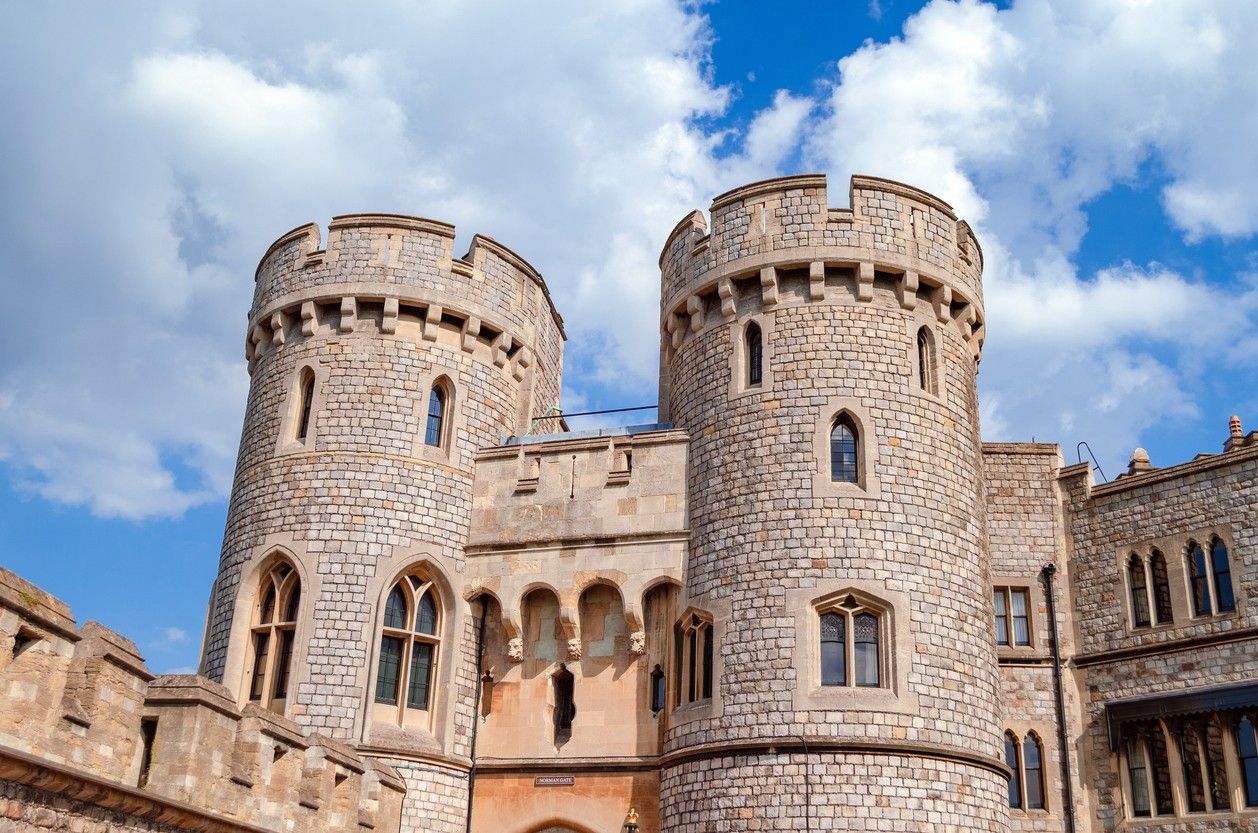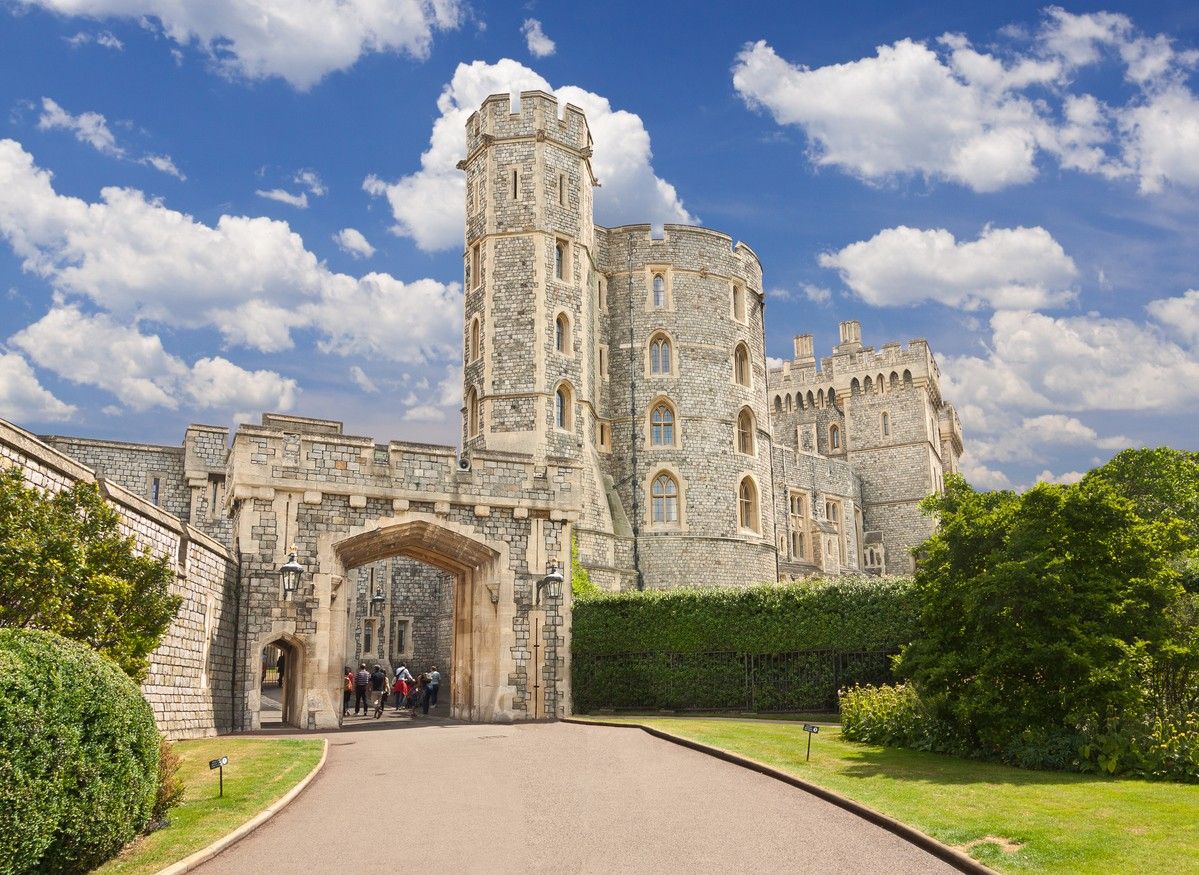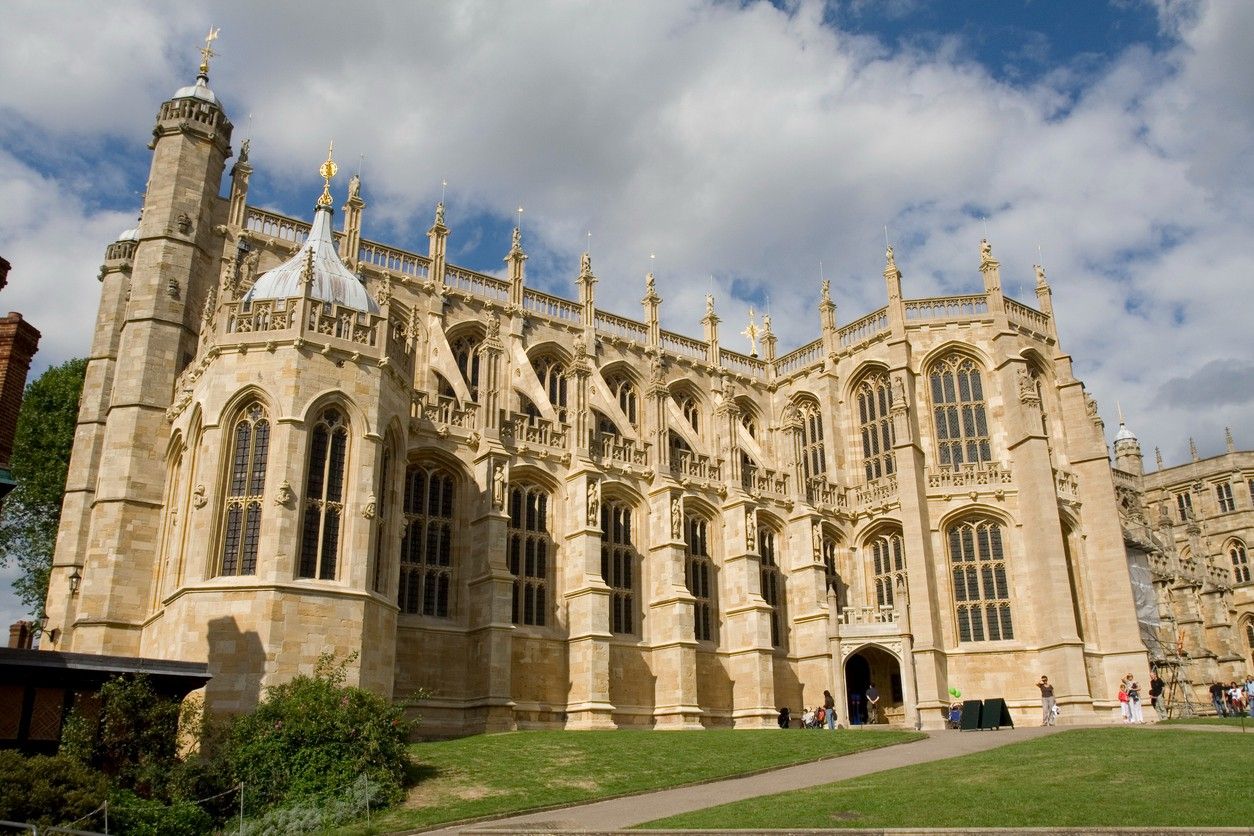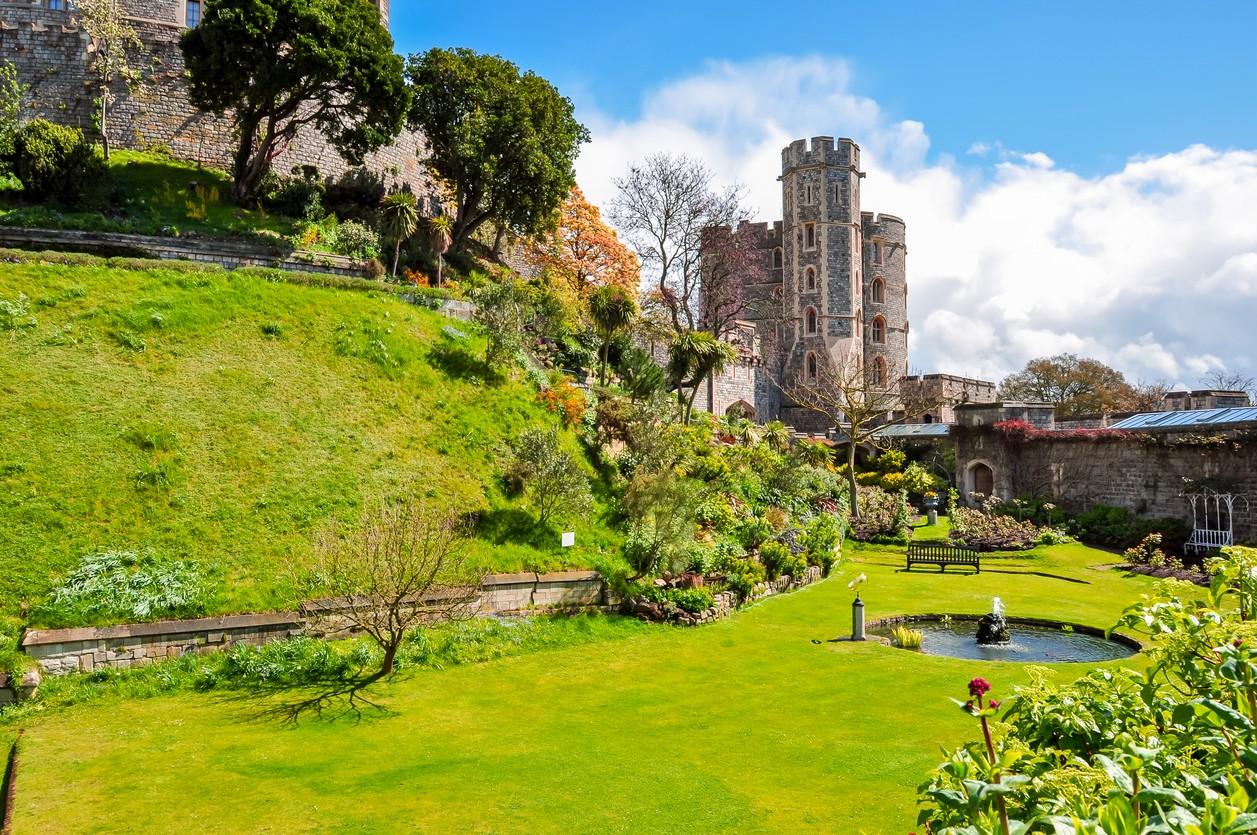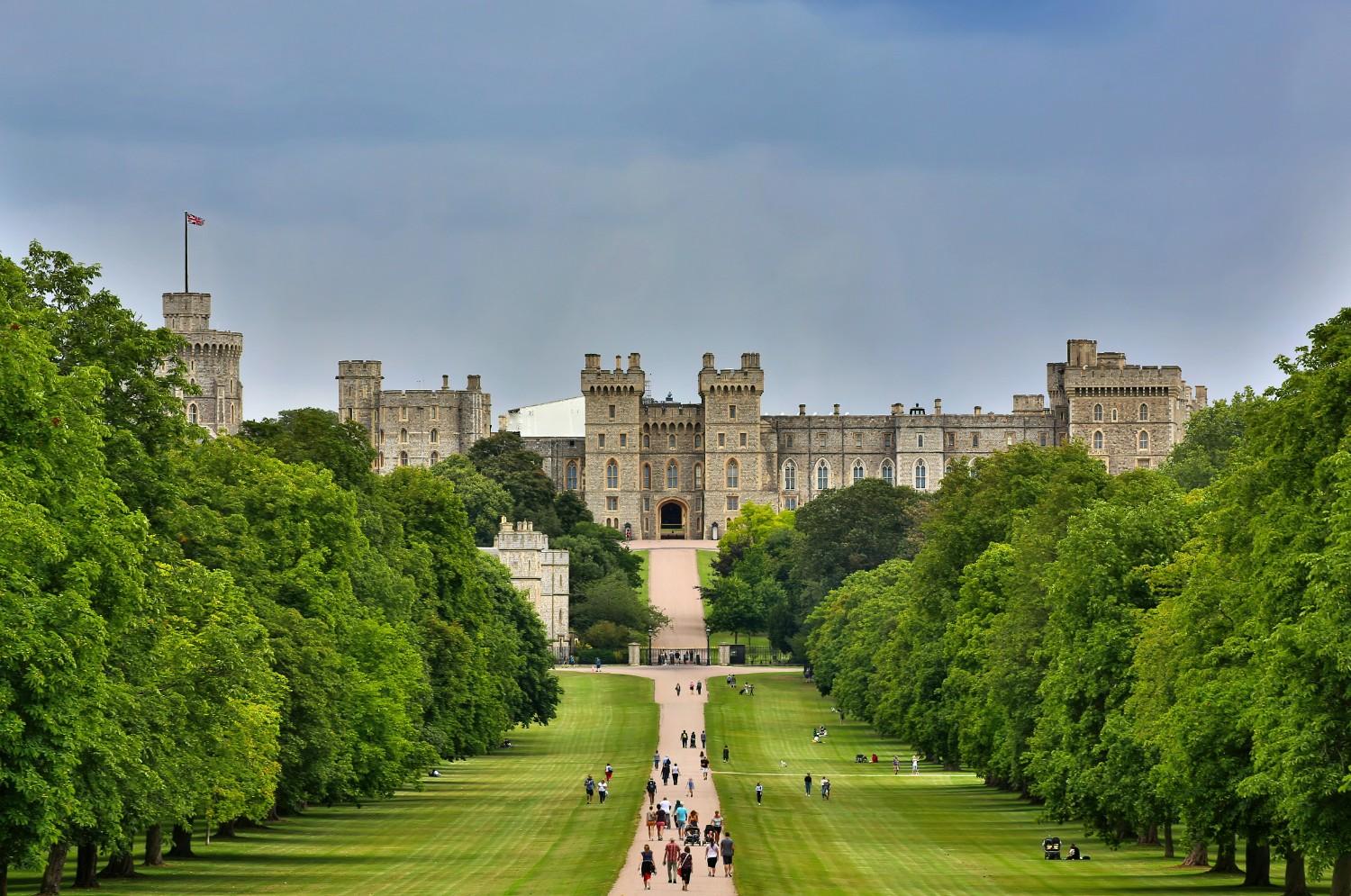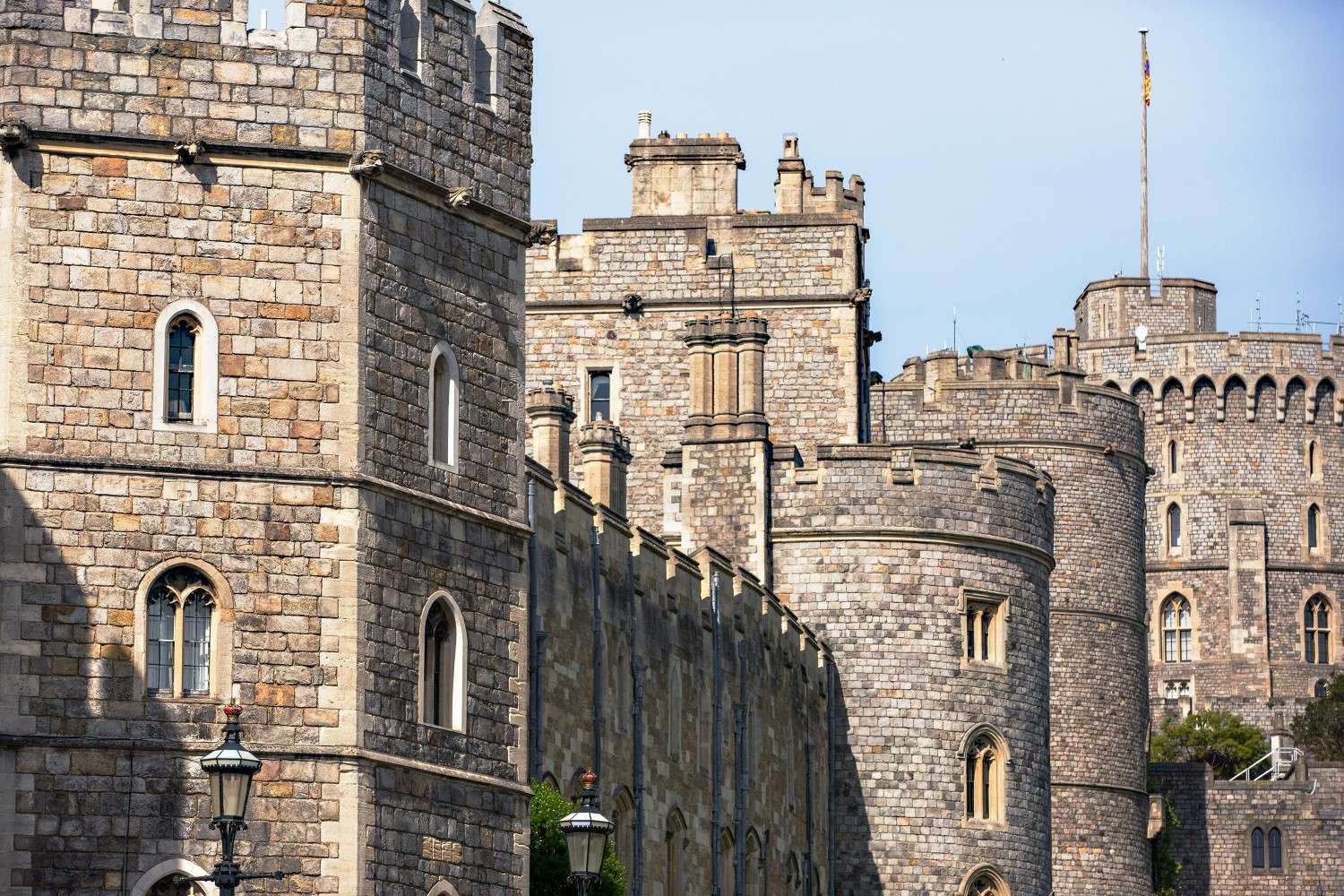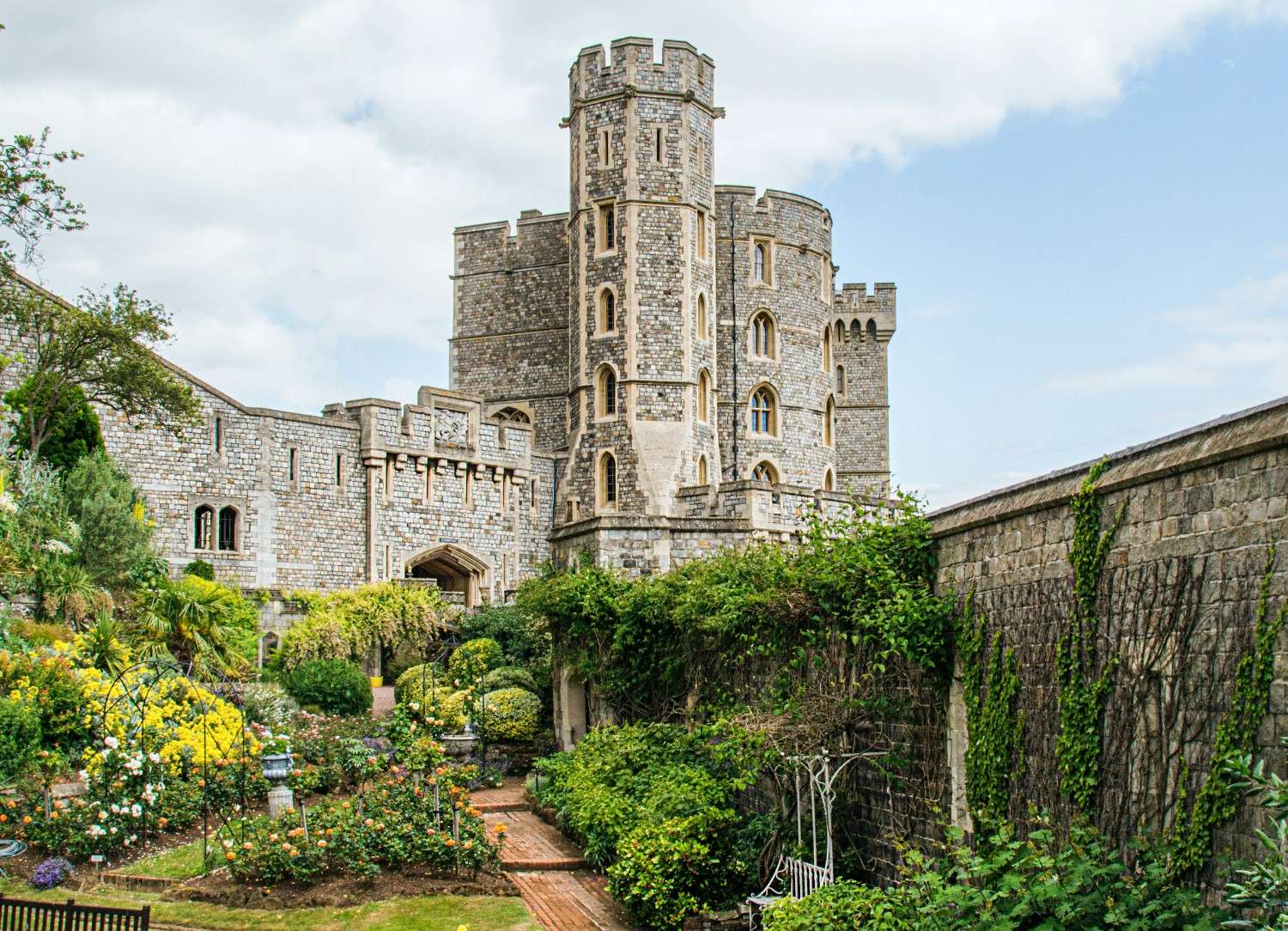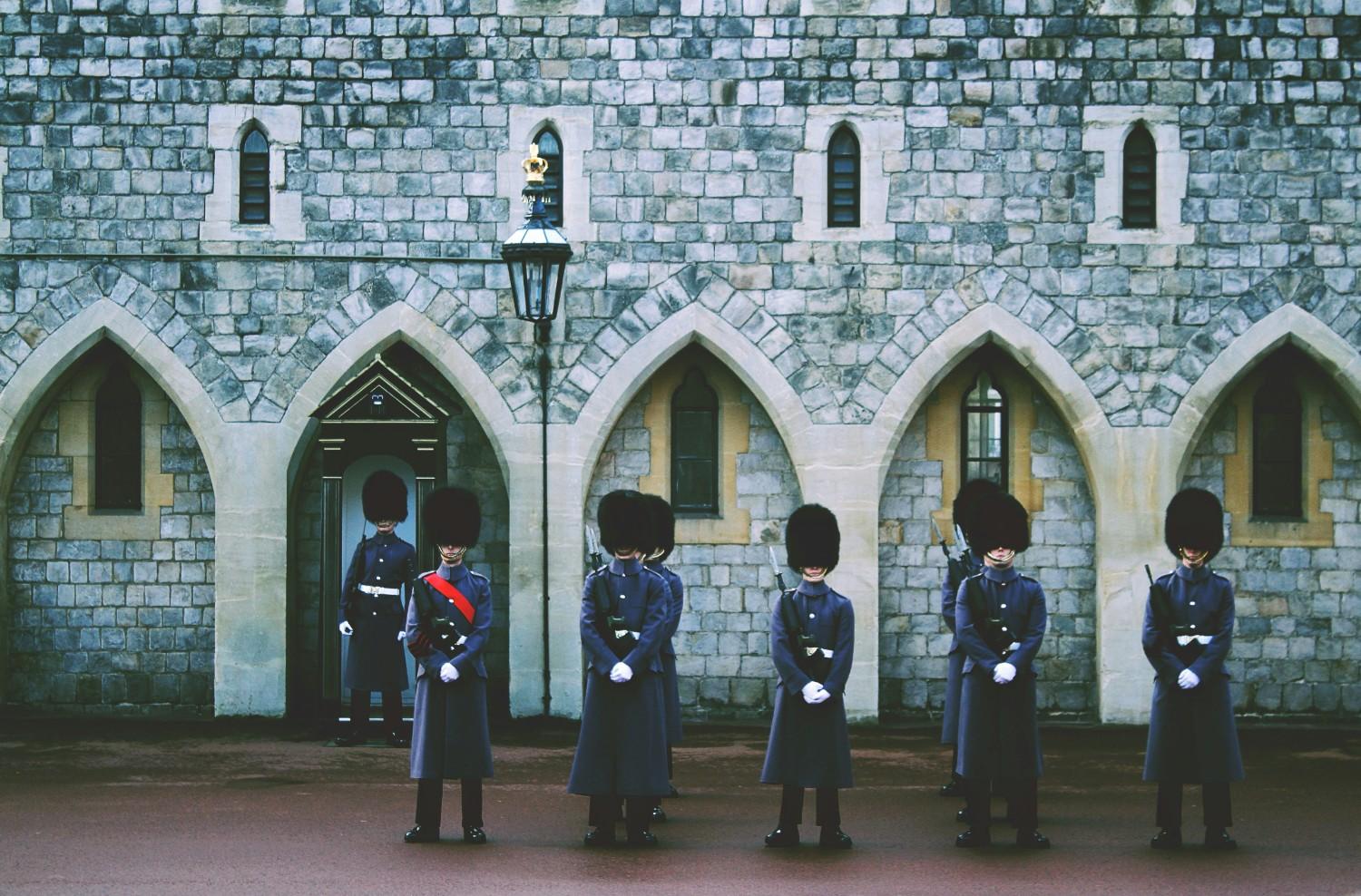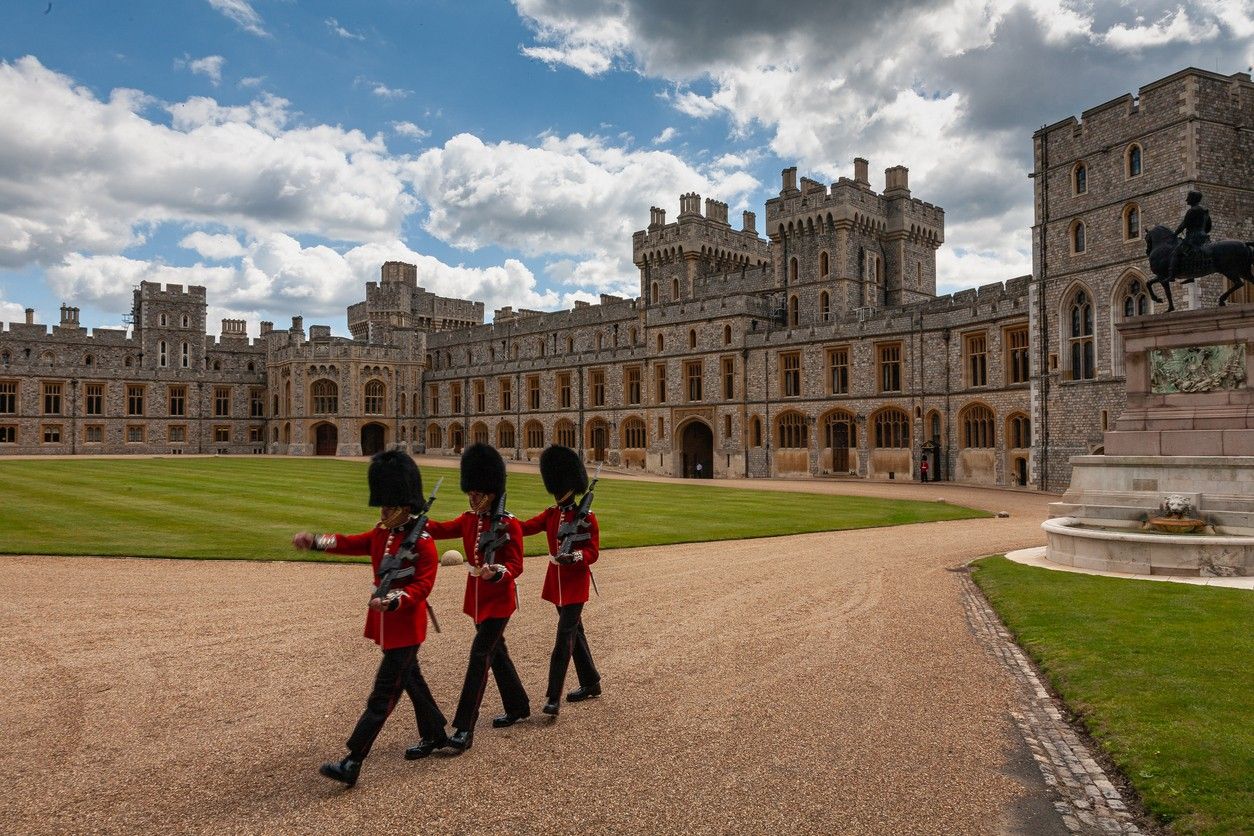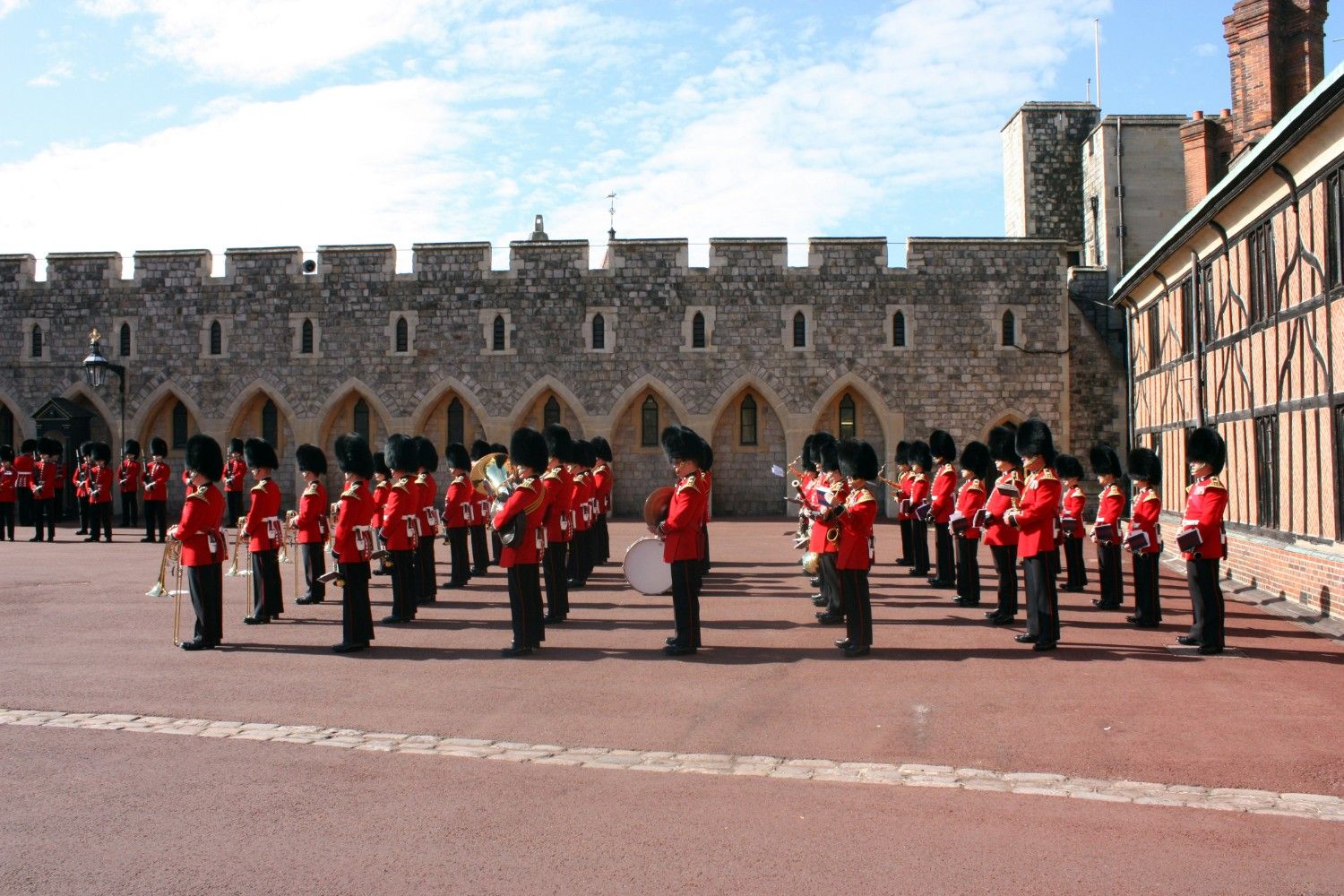The History of Windsor Castle
Windsor Castle is one of the most renowned and prestigious royal residences in the world, boasting an illustrious history that spans nearly a millennium. This iconic landmark, nestled in the picturesque town of Windsor in the English county of Berkshire, has been a favoured abode of British monarchs for centuries. The origins of Windsor Castle can be traced back to the late 11th century when William the Conqueror, the Norman monarch who claimed the English throne in 1066, recognised the strategic importance of the site overlooking the River Thames. Originally constructed as a motte-and-bailey castle, a defensive fortification typical of the period, the structure underwent successive expansions and renovations over the centuries, ultimately evolving into the magnificent edifice we see today. Throughout its storied past, Windsor Castle has played a pivotal role in the annals of British history, bearing witness to pivotal events and serving as a backdrop for royal ceremonies, celebrations, and even momentous political decisions. It was within the castle's hallowed halls that the legendary Magna Carta, a seminal document that established the principles of liberty and laid the foundations for modern democracy, was sealed by King John in 1215.
Over the centuries, successive monarchs have left their indelible mark on the castle, each contributing to its grandeur and splendour. The reign of Edward III, who ascended the throne in 1327, is particularly noteworthy, as he embarked on an ambitious program of reconstruction and expansion, transforming the castle into a formidable Gothic masterpiece. The magnificent St. George's Chapel, a quintessential example of Perpendicular Gothic architecture, was also commissioned during this era, becoming a symbol of the Order of the Garter, the oldest and most prestigious order of chivalry in the British honours system. The Tudor era witnessed further enhancements to the castle, with Henry VIII overseeing the construction of the imposing Tudor buildings, including the iconic State Apartments, which remain a highlight for visitors to this day. Queen Elizabeth I, the last monarch of the Tudor dynasty, is also closely associated with Windsor Castle, having spent much of her childhood within its walls.
Architectural Grandeur and Royal Residence
A marvel of architectural prowess, Windsor Castle boasts a fusion of medieval fortifications and opulent Renaissance design. Its sprawling grounds encompass not only the imposing Keep and State Apartments but also a myriad of royal residences, each reflecting the tastes and aspirations of the monarchs who called Windsor home. From the lavish splendour of the State Rooms to the intimate chambers of the private quarters, every corner of Windsor Castle exudes regal splendour and refinement.
An Architectural Marvel
Windsor Castle is an architectural marvel, a testament to the ingenuity and craftsmanship of generations of skilled artisans and builders. From the imposing Round Tower, a striking remnant of the original Norman fortifications, to the grand State Apartments, adorned with priceless works of art and opulent furnishings, each aspect of the castle is a feast for the eyes. The castle's architectural journey began with the robust motte-and-bailey design of the 11th century, a practical defensive structure that later gave way to the more ornate and fortified structures we see today. The Norman phase of construction, initiated by William the Conqueror, laid the foundations for the castle's iconic features, such as the massive stone keep and the intricate carvings that adorned the interior spaces. As the centuries progressed, each successive monarch left an indelible mark on the castle's architecture, reflecting the evolving styles and tastes of their respective eras. The Gothic grandeur of the 14th century saw the introduction of the magnificent St. George's Chapel, a breathtaking example of Perpendicular Gothic style, with its soaring vaulted ceilings and intricate stone tracery.
The Tudor period brought about a significant transformation, with the construction of the iconic Tudor buildings, including the State Apartments. These grand structures, with their ornate chimneys, leaded windows, and imposing silhouettes, exemplified the opulence and grandeur of the Tudor court. The 17th and 18th centuries witnessed further embellishments, with the addition of the lavish Baroque and Rococo elements that adorned the interiors, reflecting the prevailing artistic trends of the time. The skilled craftspeople of the era left their mark through elaborate plasterwork, intricate woodcarvings, and exquisite tapestries that adorned the walls and ceilings. Today, Windsor Castle is a harmonious blend of architectural styles, each layer telling a story of the monarchs who shaped its evolution. From the sturdy Norman foundations to the ornate Gothic flourishes and the regal Tudor additions, the castle is a living museum that showcases the rich tapestry of British architectural heritage.
The State Apartments
At the heart of Windsor Castle's architectural splendour lie the State Apartments, a sequence of lavishly decorated rooms that have served as ceremonial and entertaining spaces for royalty over the centuries. These opulent chambers are a testament to the grandeur and pageantry of the British monarchy, each room boasting a unique blend of historical and contemporary design elements. The Grand Reception Room, with its vaulted ceiling and intricate carvings, is a sight to behold. This magnificent space, once used to welcome distinguished guests and dignitaries, is adorned with a stunning collection of paintings and tapestries that depict scenes from British history and mythology. The room's centrepiece is the magnificent fireplace, a masterpiece of carved stone and gilt, flanked by ornate columns and intricate plasterwork. Adjacent to the Grand Reception Room is the Waterloo Chamber, named in honour of the Duke of Wellington's victory at the Battle of Waterloo. This grand hall boasts a stunning collection of portraits and paintings commemorating the event, including the iconic work by Sir Thomas Lawrence depicting the famous meeting between Wellington and Blücher after the battle.
The Semi-State Rooms, which include the Crimson Drawing Room and the Green Drawing Room, are equally impressive, showcasing a harmonious blend of historical and contemporary design elements. The Crimson Drawing Room, with its rich crimson hues and intricate gilded detailing, was once used as a private audience chamber for the monarch. The Green Drawing Room, on the other hand, boasts a more subdued yet equally elegant colour scheme, with its delicate silk wall coverings and exquisite furniture. Beyond these grand spaces, the State Apartments also house a collection of smaller rooms, each with its own unique charm and historical significance. The Queen's Closet, for example, is a cosy yet opulent chamber that was once used by Queen Mary as a private retreat, while the Rubens Room showcases a collection of masterpieces by the Flemish artist Peter Paul Rubens. Throughout the State Apartments, visitors are treated to a visual feast of opulent furnishings, priceless artworks, and intricate architectural details that transport them back in time. From the gilded mirrors that adorn the walls to the ornate chandeliers that cast a warm glow over the rooms, every element is a testament to the wealth, power, and artistic patronage of the British monarchy.
Other Regal Residences
Beyond the grandeur of the State Apartments, Windsor Castle is home to several other notable residences, each with its own unique character and historical significance. These spaces offer a glimpse into the private lives of the royal family and shed light on the intricate workings of the royal household. One of the most iconic structures within the castle grounds is the Round Tower, a striking remnant of the original Norman fortifications. Dating back to the 12th century, this massive circular tower stands as a symbol of the castle's defensive roots, its thick stone walls and imposing silhouette evoking a sense of strength and resilience. Today, the tower offers breathtaking panoramic views of the surrounding landscapes, making it a popular vantage point for visitors. The elegant Queen's Apartments, once occupied by Queen Mary and King George VI, exude a sense of regal elegance and charm. These private chambers, adorned with exquisite furnishings and delicate textiles, offer a glimpse into the more intimate spaces where the royal family resided. The Queen's Sitting Room, with its cosy fireplace and comfortable seating, is a testament to the importance of family life within the castle walls.
The Prince of Wales' Apartments is another noteworthy residence, showcasing the refined tastes and personal touches of the heir apparent. These chambers, which have been occupied by successive Princes of Wales throughout history, feature a harmonious blend of classical and contemporary design elements, reflecting the evolving styles and preferences of each occupant. Beyond these grand residences, Windsor Castle is home to a myriad of smaller chambers and quarters that play vital roles in the daily operations of the royal household. The Royal Kitchens, for example, offer a glimpse into the culinary traditions and logistics involved in catering to the monarch and their guests, with their vast arrays of copper pots, ovens, and storage areas. The Royal Stables, located within the castle grounds, are another fascinating aspect of the castle's history. These magnificent structures, which once housed the royal horses and carriages, are a testament to the importance of equestrian pursuits in the lives of the monarchy. Today, the stables offer visitors a chance to explore the intricate world of royal transportation and equine care.
St. George's Chapel and the Order of the Garter
Discover the spiritual heart of Windsor Castle within the hallowed walls of St. George's Chapel. A masterpiece of Gothic architecture, this revered sanctuary has borne witness to countless royal weddings, funerals, and religious ceremonies throughout the ages. Explore the illustrious history of the Order of the Garter, Britain's oldest and most prestigious chivalric order, which finds its home within the chapel's sacred precincts.
A Gothic Masterpiece
Nestled within the precincts of Windsor Castle is the magnificent St. George's Chapel, a true architectural gem and a testament to the devotion of the British monarchs to their faith and the traditions of the Order of the Garter. Constructed in the late 15th century at the behest of King Edward IV, this Gothic masterpiece is renowned for its intricate stone carvings, soaring vaulted ceilings, and stunning stained-glass windows that bathe the interior in a warm, ethereal glow. The chapel's exterior is a sight to behold, with its ornate façade and towering spire reaching skyward, a striking contrast to the solid stone walls of the castle. The West Door, a masterpiece of carved stone, depicts intricate scenes from the life of Christ and the Passion, with each figure and detail meticulously carved by skilled artisans. Upon entering the chapel, visitors are immediately struck by the grandeur and majesty of the interior. The nave, with its soaring vaulted ceiling and slender columns, creates a sense of awe and reverence. The intricate stone tracery that adorns the walls and arches is a true testament to the skill of the medieval stonemasons, with each delicate pattern and motif carved with painstaking precision.
One of the highlights of the chapel is the magnificent Quire, the heart of the spiritual space. Here, the ornate carved stalls and canopies, adorned with the heraldic insignia of each Knight of the Garter, provide a fitting backdrop for the annual Garter Day ceremonies. The intricate woodcarvings, depicting scenes from the Bible and the lives of saints, are a masterclass in craftsmanship, with each detail meticulously rendered. The chapel's stained-glass windows are another highlight, casting a kaleidoscope of colours onto the interior spaces. The Great West Window, a stunning example of 16th-century glass artistry, depicts the Last Judgment in vivid detail, its vibrant hues and intricate patterns captivating visitors with their beauty and symbolism.
Spiritual Heart of the Order
St.George's Chapel is not merely a place of worship but also serves as the spiritual heart of the prestigious Order of the Garter, the oldest and most prestigious order of chivalry in the United Kingdom. Established in 1348 by King Edward III, the Order of the Garter is a symbol of honour, loyalty, and service to the Crown, with its membership limited to the monarch and a select group of knights chosen for their exceptional contributions to the nation. The chapel's Quire, with its ornate carved stalls and canopies, is the centrepiece of the Order's ceremonial traditions. Each stall is adorned with the heraldic insignia and coat of arms of a Knight of the Garter, creating a rich tapestry of symbolism and history that reflects the Order's illustrious past and present.
One of the most significant events in the Order's calendar is the annual Garter Day celebration, a pageant of pomp and circumstance that takes place within the hallowed walls of St. George's Chapel. On this day, new knights are formally invested into the Order, with the ceremonial procession of knights and other dignitaries winding its way through the castle grounds and into the chapel. The investiture ceremony itself is a sight to behold, with the new knights kneeling before the sovereign to receive the insignia of the Order: the Garter, the George, and the Collar. This solemn ritual is steeped in centuries of tradition, with each gesture and utterance carrying deep symbolic meaning. Beyond the investiture ceremony, the chapel plays host to a range of other events and rituals associated with the Order of the Garter. The annual Garter Service, held on the Sunday closest to St. George's Day, sees the knights and their families gather in the chapel to pay homage to their patron saint and renew their vows of loyalty and service.
Sacred Site for Royalty
For centuries, St. George's Chapel has held a sacred place in the hearts of the British royal family, serving as a hallowed site for weddings, funerals, and memorial services. Its breathtaking nave and soaring Gothic arches have witnessed countless regal nuptials, each one etched into the annals of history and the collective memory of the nation. One of the most recent and memorable royal weddings to take place within the chapel's walls was the union of Prince Harry and Meghan Markle in 2018. The world watched in awe as the couple exchanged their vows before a global audience, their love story unfolding against the backdrop of the chapel's exquisite beauty and rich history. Similarly, the chapel played host to the nuptials of Princess Eugenie and Jack Brooksbank in the same year, with the couple's ceremony capturing the hearts of millions and showcasing the enduring traditions of the British monarchy.
Beyond its role as a venue for royal weddings, St. George's Chapel has also been a sacred site for funerals and memorial services, offering a solemn and dignified setting for the nation to bid farewell to its beloved monarchs and members of the royal family. The chapel's Tomb House, which contains the final resting places of several monarchs, including Henry VIII and Jane Seymour, is a poignant reminder of the chapel's enduring role as a repository of royal history and a site of reverence for generations past and present. One of the most moving and significant events in recent memory was the funeral of Queen Elizabeth II in 2022, where the nation and the world came together to pay their respects to the longest-reigning British monarch. The chapel's nave was filled with dignitaries, family members, and mourners, all united in their grief and admiration for the late Queen's unwavering service and dedication. The King George VI Memorial Chapel, a stunning addition to the complex, also holds a special place in the history of the royal family. This sacred space contains the tombs of King George VI and Queen Elizabeth, the Queen Mother, as well as the ashes of Princess Margaret, serving as a powerful reminder of the enduring legacy of the Windsor dynasty and the sacred ties that bind the royal family to this hallowed site.
The Changing of the Guard and Ceremonial Traditions
Step into the world of ceremonial pageantry and military precision as Windsor Castle plays host to the iconic Changing of the Guard. Witness the centuries-old tradition unfold with pomp and circumstance, as regiments of the Household Division execute their meticulously choreographed routine against the backdrop of the castle's majestic facades. Delve into the customs and rituals that punctuate the royal calendar, from investitures to state banquets, each imbued with a sense of solemnity and spectacle.
The Changing of the Guard
One of the most iconic and beloved traditions associated with Windsor Castle is the Changing of the Guard ceremony, a spectacular display of military pageantry that has captured the imaginations of visitors from around the world. This meticulously choreographed ritual, which takes place at regular intervals throughout the year, involves the ceremonial handover of guard duties between two separate detachments of the Queen's Foot Guards. As the clock strikes the appointed hour, the sound of marching footsteps and the rhythmic beat of military drums fill the air, heralding the arrival of the new guard. Resplendent in their distinctive bearskin hats and immaculately pressed scarlet uniforms, the soldiers march in perfect unison, their movements a testament to the rigorous training and discipline that defines the British military tradition. The ceremony itself is a carefully orchestrated display of precision and spectacle, with each movement and formation executed with the utmost attention to detail. The outgoing guard, having completed their duty, marches out of the castle grounds to the rousing strains of military music, their footsteps echoing against the ancient stone walls.
As they depart, the new guard emerges, their scarlet tunics and polished boots gleaming in the sunlight. Led by their officers and accompanied by the stirring melodies of the regimental band, they march in formation, their steps perfectly synchronised, until they reach their designated posts. The Changing of the Guard is not merely a military exercise but a cherished tradition that dates back centuries. Its origins can be traced back to the reign of Henry VII, who established a permanent body of guards to protect the sovereign and the royal residences. Over time, the ceremony evolved into a grand spectacle, a visual representation of the unwavering commitment and loyalty of the British military to the Crown.
Ceremonial Hub
Beyond the Changing of the Guard, Windsor Castle is a hub of ceremonial traditions that celebrate the rich tapestry of British cultural heritage. The annual celebrations of the Order of the Garter, with their elaborate processions and investiture ceremonies, are a highlight of the social calendar, drawing guests from around the world to witness the pageantry and grandeur of these time-honoured rituals. The castle's grand State Apartments serve as the backdrop for many of these ceremonial events, with their opulent chambers and lavish furnishings providing a fitting stage for the pomp and circumstance that accompanies such occasions. From state banquets and receptions to investiture ceremonies and garden parties, each event is meticulously planned and executed, adhering to the strict protocols and etiquette that have governed the royal household for centuries.
One of the most significant events in the royal calendar is the annual Garter Day celebration, which takes place within the hallowed walls of St. George's Chapel. On this day, new knights are formally invested into the prestigious Order of the Garter, a centuries-old tradition that dates back to the reign of Edward III. The ceremony itself is a true spectacle, with the knights and their families processing through the castle grounds in a grand procession, accompanied by the stirring music of military bands and the flutter of colourful banners. Once inside the chapel, the new knights kneel before the sovereign to receive the insignia of the Order: the Garter, the George, and the Collar. This solemn ritual is steeped in centuries of tradition, with each gesture and utterance carrying deep symbolic meaning.
Beyond the Garter Day celebrations, Windsor Castle plays host to a range of other official events and functions, each offering a unique glimpse into the intricate web of protocol and etiquette that governs the royal household. State banquets and receptions are held in the lavish State Apartments, where guests are treated to a display of regal grandeur and culinary excellence. Garden parties on the castle grounds provide an opportunity for the royal family to mingle with members of the public, celebrating the contributions of individuals from various walks of life. These events are a testament to the enduring bond between the monarchy and the people, showcasing the monarchy's commitment to engaging with its subjects and recognising their achievements.
Planning Your Visit to Windsor Castle
Practical Considerations — For those planning to visit Windsor Castle, there are a few key considerations to keep in mind to ensure a seamless and enjoyable experience. First and foremost, it is essential to familiarise oneself with the Windsor Castle opening times and admission fees, as these can vary depending on the season and specific events taking place.
Getting There — One of the most convenient ways to reach Windsor Castle is by taking a train from London, with regular services departing from Paddington and Waterloo stations. The journey takes approximately an hour, and upon arrival at Windsor & Eton Riverside or Windsor & Eton Central stations, visitors can either embark on a stroll or take advantage of the shuttle services that transport visitors directly to the castle's entrance. For those driving to Windsor Castle, ample parking facilities are available in the town centre, although it is advisable to plan and arrive early to secure a spot, especially during peak tourist seasons.
Exploring the Castle — Once at the castle, visitors can take advantage of the audio guides in multiple languages, providing an immersive and informative experience as they explore the various areas and exhibits.
Windsor Castle Tour — For those seeking an in-depth understanding of the castle's history and architectural marvels, a variety of guided tours are available. From the traditional Connoisseur's Tour, which delves into the intricate details of the State Apartments and the priceless art collection, to the more specialised tours focusing on aspects such as the Changing of the Guard or the Royal Kitchens, there is something to captivate every interest.
Visitor Etiquette — Visitors should also be mindful of the dress code, as Windsor Castle is an official royal residence and certain standards of attire are expected. While comfortable shoes are recommended for the extensive walking involved, it is advisable to avoid overly casual or revealing clothing out of respect for the venue's historical and cultural significance.
Related Articles

Let us know you agree to cookies
We use marketing, analytical and functional cookies as well as similar technologies to give you the best experience. Third parties, including social media platforms, often place tracking cookies on our site to show you personalised adverts outside of our website.
We store your cookie preferences for two years and you can edit your preferences via ‘manage cookies’ or through the cookie policy at the bottom of every page. For more information, please see our cookie policy.
